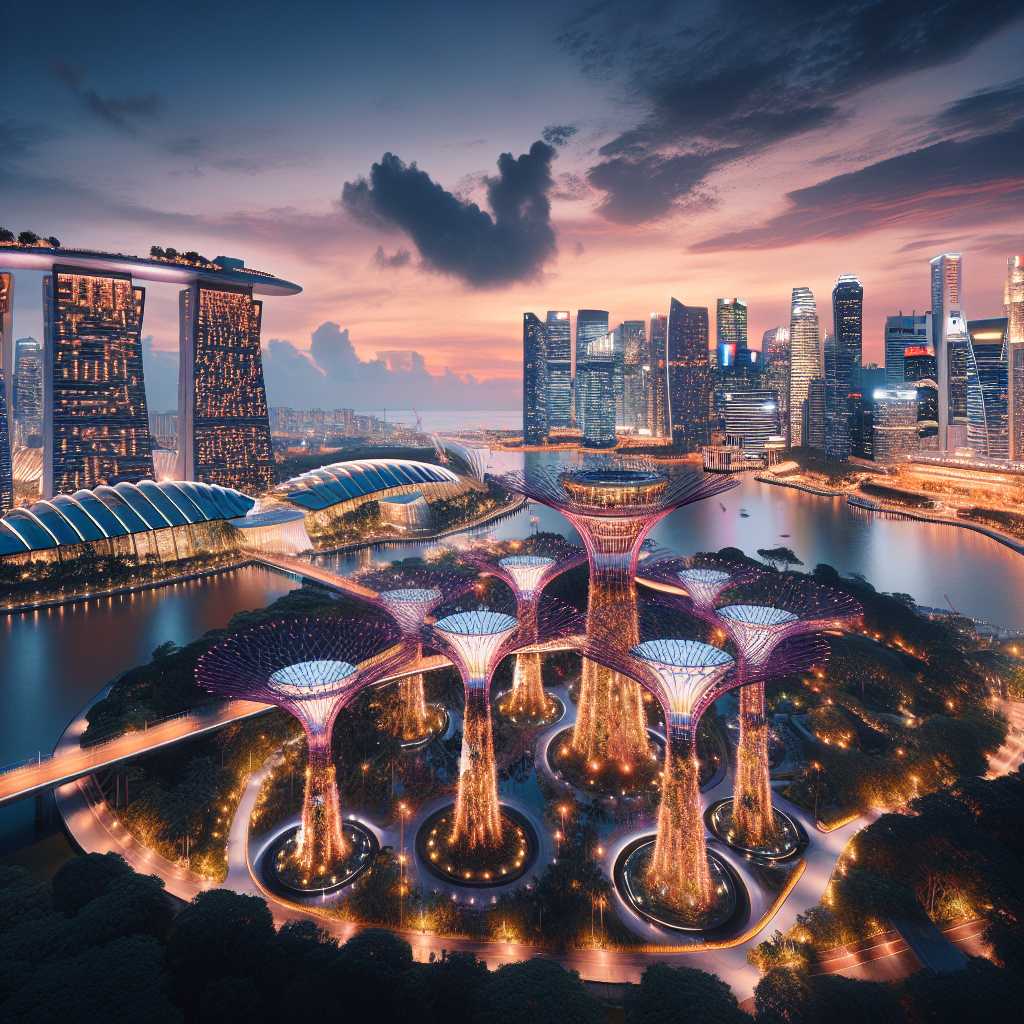Singapore: A Thriving Cosmopolitan Hub in Southeast Asia
Singapore, known officially as the Republic of Singapore, is a sovereign city-state and island country in Southeast Asia. Emerging from a turbulent colonial history to become a thriving economic powerhouse, Singapore stands as a testament to rapid development, impressive urban planning, and a global financial center. This article delves into the various aspects that make Singapore unique, spanning its geography, history, economy, societal structure, and the distinctive blend of cultures that underpin the nation’s identity.
Geography and Climate of Singapore
Situated off the southern tip of the Malay Peninsula, Singapore consists of one primary island and several other smaller islets. With limited land and natural resources, its strategic location on key shipping lanes has been vital to its economic growth and diversification. Singapore features a tropical rainforest climate with no distinctive seasons, high humidity, and uniform temperatures. Frequent rainfall benefits the lush landscapes and parks scattered across the city, contributing to its moniker, “City in a Garden.”
Brief History: From Trading Post to Independent Nationhood
Historically a part of various regional empires, Singapore’s modern story began with its founding as a British trading post in 1819 by Sir Stamford Raffles. After turbulent periods which included Japanese occupation during World War II and subsequent reoccupation by British forces, Singapore joined the Federation of Malaysia in 1963. However, socio-economic differences led to its expulsion and official independence on August 9, 1965.
Singapore’s journey to nationhood was marked by an initial struggle for survival without natural resources or hinterland, prompting a focus on human capital and extensive market-oriented reforms under the governance of the People’s Action Party (PAP), which has held power since self-governance in 1959.
Economy: Adaptation and Innovation as Cornerstones
Singapore has meticulously cultivated an advanced economy that excels in areas such as finance, manufacturing, and trade. Its strategic geographical position made it a global hub for shipping and logistics. The country boasts a highly developed market economy identified by stability in prices and a high per capita gross domestic product (GDP). It is considered one of the freest economies in the world with minimal corruption and an open business environment.
The Economy is underpinned by industry sectors such as electronics, biotechnology, chemicals, and services (including banking, insurance, consultancy). The government plays an active role in regulating and steering the economy through Sovereign Wealth Funds like Temasek Holdings and GIC Private Limited but coupled with a very open business policy that encourages considerable foreign investment.
Cultural Tapestry: Diversity as Strength
The cultural cornerstone of Singapore derives from its multi-ethnic population encompassing Chinese, Malay, Indian, and other smaller community groups. Each ethnicity retains distinct cultural traditions including languages (with English serving as the lingual franca), religious practices (Christianity, Buddhism, Islam, Hinduism), cuisines (such as Hainanese chicken rice and Nasi Lemak) – all while contributing to a complex social tapestry.
Government policies encourage tolerance and understanding between these different communities leading to vibrant festivities that celebrate ethnic diversity throughout the year. These policies also address issues such as integration while maintaining racial harmony since it is considered vital for national unity given past racial tensions.
Infrastructure & Urban Development: Prioritizing Efficiency
Famed for its efficient infrastructure, Singapore has developed transportation networks and urban planning initiatives responsive to its limited space constraints. Challenges facing housing demands led to the establishment of the Housing & Development Board (HDB) which provided affordable quality housing for the masses.
Despite space constraints affecting most urban centers worldwide, through effective planning and constant innovation leading to attempts such as vertical green spaces and intelligent transport systems helped sustain an enviable quality of life against burgeoning urban pressures.
Education & Societal Progress: Investments in Human Capital
Consistently ranking high globally for its public education system; Singapore stresses meritocracy with high performance standards across schools embodying equality across social strata while being sensitive to varied learning abilities. Higher education and global collaborations further propel research-driven initiatives putting Singaporean institutions among global educational leaders.
Workforce development programs align closely with emerging industries ensuring readiness amongst potential talent pool providing a plus point for organizations seeking skilled labor or setting up regional offices within Asia.
Future Challenges & Sustainability Commitments
Amidst this impressive developmental narrative lie challenges related to freedom of expression vis-a-vis social cohesion aims or dealing with the implications of an aging population on an economy profoundly reliant on human capital. In addition, keeping pace with global sustainability commitments amidst its intensive economic activity presents multiple environmental challenges.
With these formidable obstacles at bay, proactive policy-making focusing on sustainable development has placed Singapore at the helm of Asian efforts towards combatting climate change issues – with substantial investments geared towards renewable energy adoption and optimizing water resource management as such examples.
Notes
Image Description: A panoramic skyline view of Singapore at dusk featuring iconic landmarks such as Marina Bay Sands and the SuperTree Grove at Gardens by the Bay amid towering skyscrapers against a twilight sky.
